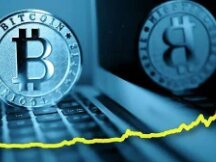Largest DeFi Liquidity Center Privacy: Convex Review Report by Income
Convex Finance launched Ethereum on May 18, 2021. The CVX token platform was listed on Binance yesterday. Today it has grown to DeFi's gross revenue with a total cost of closing (TVL) of $ 18.2 billion. Occupation (Second Finance has total fixed costs of just $ 5.6 billion). To achieve this feat in half a century, it is inextricably linked with the Curve platform that supports it, but the point is, Convex perfectly resolves the financial imbalance between the two. The results are usually not both. “Regarding Convex Financial's story of the financial crisis, we have to start with the exchange rate.
What is the curve?
Curve is DeFi's largest decentralized exchange, typically optimized for the low-slip "like-asset" market, with a total closing value of over $ 20 billion and a daily trade volume of hundreds of hundreds of millions. of Ethereum and Polygon. dollar. A similar asset is one that has the same value, whether it is a fixed amount pegged to the US dollar or a different asset, such as BTC and wBTC. At the same time, Curve has access to iEarn, Compound, Synthetix and other loan and real estate arrangements to increase investments and provide additional benefits to service providers. Finance. Lego style financial wallet is the main attraction of DeFi. .
What makes Curve the DEX No. 1 throne?
It's a good idea to consider the issues that plague users when using DEX for asset trading or as a financial service provider for two mining applications. There is no doubt that, as a user, I want to know more about the real estate market and cost holding, but as a marketer, due to DEX trading design technology, a rate advantage exchange has led to generation. to a great extraction of overall liquidity.
The above three points: Passports, prices and constant fallout are even more unreliable in a stable exchange rate situation. The high fixed coin exchange rate is usually higher, and people have a better understanding of exchange rates, at the same time, it is difficult to accept that 1 USDT only trades for 0.9 USDC. (What is called a permanent loss is when the value of an asset changes relative to one another. Compared to the loss held by holding a currency, the duration of a asset is sold and bought at a fixed price. The cost of assets increases. The real meaning.)
The importance of Stabilitycoins in the Defi ecosystem goes without saying The development of Stabilitycoins and the development of the Defi ecosystem complement each other Stablecoins such as USDT, USDC, DAI, UST, etc. / WBTC, the type of ETH / stETH has become more common and the demand for exchanging other types of stablecoins and similar assets is increasing.
Curve adopts the new AMM model (composed of regular and continuous traders and manufacturers), focusing on the competitive advantage of initially stable trades, informed for large and small trade, when Curve is 0.04 with the better. Large scale It can offer exchange rates as low as% (0.3% at Uniswap) and a rare occurrence of the provider can mean low permanence risk.
Check the changes in the AMM model. In the figure (below), the representations represent the comparison of the two assets of the asset and the slope showing the exchange current of the asset, for example the cost of the assets. It is intuitively clear that xy = const is a hyperbola and the slope of x is constantly changing, but managing an asset price requires deep water which is very difficult to master in practice. In the x y = const curve, the slope of the slope is the same everywhere, but you run into the problem of depleting an asset, that is, depleting liquidity.
Curve's AMM model, Stableswapinvariant, balances both pros and cons and ensures the security of the exchange value of assets at a higher cost while ensuring that the asset market is not compromised. (The curve increases the ratio of assets to equilibrium by depositing and subtracting assets, which allows for higher returns.)

(where n represents the number of assets (n = 2 in this example), A is the "expansion" parameter which determines the similarity of the function and the product. works continuously. The lower the A, the closer The operation of the curve is unique to Uniswap)
Source: White paper on the curve
The economy of Curve qauv tokens
CurveDAO was announced on August 13, 2020 and announced the CRV token policy. The highest share of CRV is 3.03 billion, of which 62% is distributed to community service providers, 30% is distributed to groups and early investors (2-4 year acquisition) and 5% is used for the community storage. granted to employees with a two-year acquisition right.

Distribution of release CRV, source: curve formula
The CRV now has three main purposes: community voting, partial community management fees, and increasing pool income (up to 2.5 times). The prerequisite for achieving the above goal is to qualify for CRV and receive veCRV. Compared to traditional DEX protocols that use DAO control, the Innovation Curve is an uptime extension for closed CRV regulations. veCRV = CRV * T / 4 (T is closing time), for example the longer the duration of the CRV contract the more you get from veCRV, you can choose CRV to close your house for 4 years and get veCRV 1: 1. With the contract closed, the order cannot be reversed and the veCRV cannot be declared.
Under Curve's implementing law, it's not hard to see that high mining yields and community-shared management costs are what consumers want, and what isn't. CRV lock is what users hate. In order to get a higher return, people have to sacrifice current resources. It may sound fitting, but is it worth it?
Convex says "No!"
As a legitimate website, Convex generates revenue for the ease of use of Curve, but the simplicity of the process alone is not enough to leave the end result. The real cost lies in the liquidity and payback of the Curve protocol, the inconsistency problem, and the ability to give small investors a higher return than the Curve contract when the sand is finally released into the towers and drained into the bank. Wed !
But what I want to know is how Convex does this. First, let's take a look at Convex's standard token industry. Convex's protocol token is CVX, with a maximum of 100 million, of which 50% will be distributed to users who provide income to the Curve platform through the Convex platform (increase in business start-up income), 25 % provide CVX / Liquidity mining Support for ETH and cvxCRV / CRV mining pools (mining pool configuration greatly improves drainage of cvxCRV, which is part of Convex Insufficient resolution of veCRV), 10% for Convex group, 9 , 7% for the Vesting contract, 3.3% for early adopters, 2% for the holding of veCRV.

CLC distribution rules, Source: Convex official website
cvxCRV is the main specification of the veCRV platform on the Convex platform. You can get it with a CRV contract on the Convex platform, and you can earn cvxCRV by contracting a CRV. Working time in veCRV is not included. All CRVs are attached to the curve. Maintains the platform for 4 years, and as a single user it is often difficult to avoid a downtime of up to 4 years.
At the same time, the Convex protocol itself allows cvxCRV to travel, and thanks to its own support based on the CVX protocol token, the cvxCRV / CRV liquid mining pool is developed and the liquidity was excellent. In SushiSwap, cvxCRV and CRV are nearby. 1: 1 exchange. This process is similar to asset securitization, where a low-cost asset (veCRV) is transformed into a high-value security (cvxCRV), where Convex becomes a bank.

cvxCRV / CRV defaults to rau 1/1. Source: SushiSwap
In summary, depending on the appropriate CRV token hold, you have four options. The first is to simply hold the CRV and wait for the price to go up, the second is to go to the Curve and engage with the CRV in exchange for the veCRV, which will get the voting rights and control fees on the promised Curve form. The third is to go to Convex and get a CRV to get cvxCRV. When the veCRV operators get the highest revenue and the CLC they can enjoy without financial disruption, 16% of their revenue goes quickly to the platform. Fourth, if you go to SUSHISwap and provide income, you will receive SUSHI, exchange rates, and CLC support. The third and fourth options are on the convex platform.

4 options and their advantages for CRV holders
The reason why the convex model works is that if the CVX price is too low, the yield of the third option will be reduced, at the same time the decrease in the yield of SushiSwap mining can lead to insufficient cvxCRV. Therefore, the Convex protocol still needs some measures to reduce the traffic between CVX and cvxCRV. Convex quickly charges 16% of revenue based on the value of the platform and as a result helps CVX and cvxCRV holders to pledge tokens.
However, the advantage of the Convex protocol is that not only is the fluid quality of cvxCRV improved over veCRV, but also that the Convex protocol can consolidate a lot of money and increase Curve's revenue. Unable to make enough money with a small amount of money, the VeCRV is used to support lake water harvesting. Speed up your results without stopping your CRV.

16% of the value platform is typically used to support entrepreneurs on cvxCRV and CVX.
The Convex protocol is attracting more and more users by solving the problem of using Curve, and at the same time, the advent of Convex will support a continuous increase in the locking volume of CRV. Human reliability in price Increasing CRV will add more users. The correct Convex / Curve strategy has created strong competition on the fixed exchange rate. The $ 8.2 billion TVL shows that it has become a significant revenue stream in the DeFi ecosystem, but the efforts of “financial geeks” aren't limited here.

Scan QR code with WeChat





